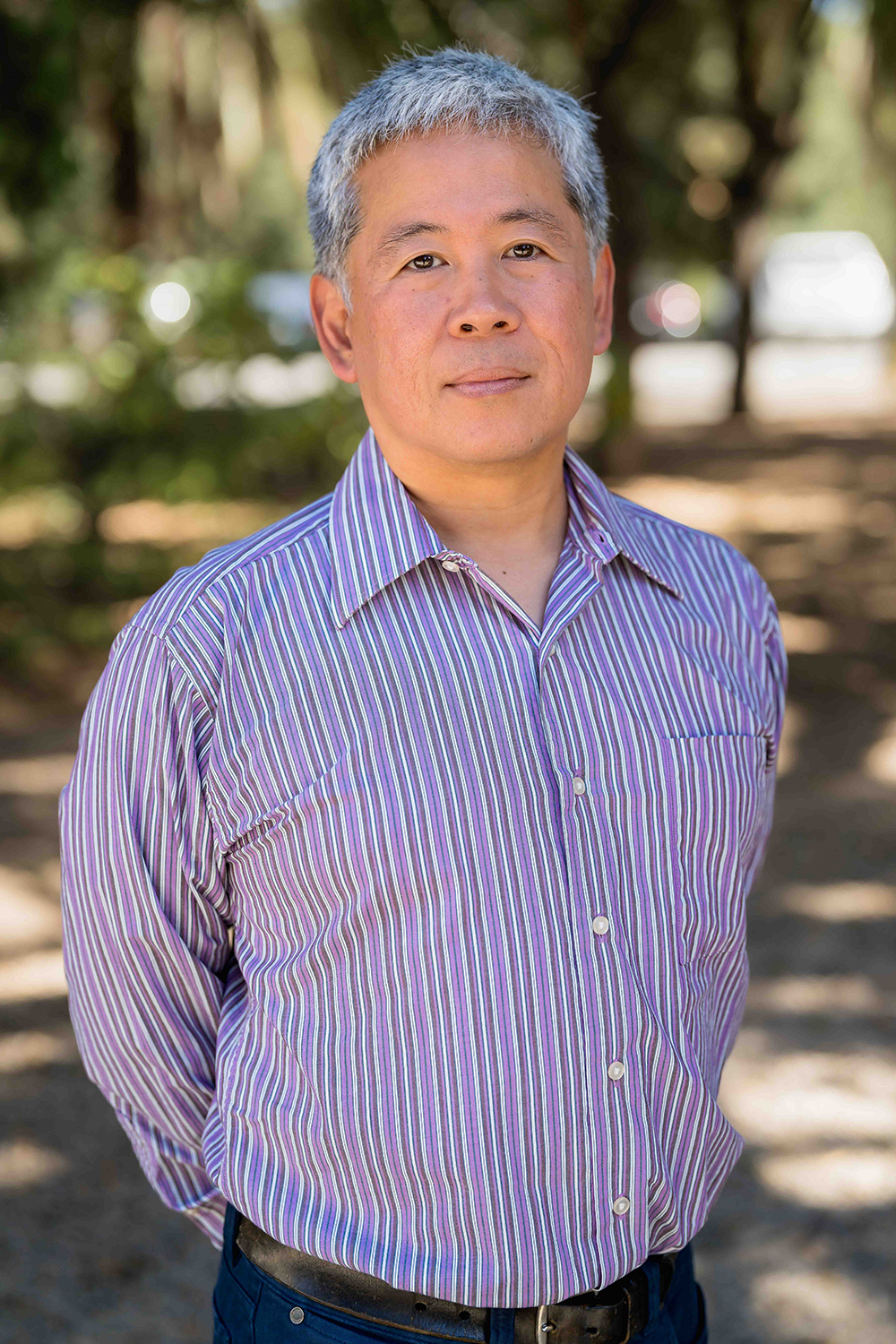Hideo Mabuchi on making and knowing
The physicist and faculty director of the Stanford Arts Institute wants to move “away from hybridizing art and science and toward resurrecting their last common ancestor.”
Hideo Mabuchi, practicing artist and professor of applied physics in the School of Humanities and Sciences, is the new Denning Faculty Director of the Stanford Arts Institute (SAI). Parallel with his research in quantum engineering, he has developed deep personal interests in exploring interfaces of modern science with traditional craft, aesthetic philosophy, and new materialism. As a teacher, he aspires to invigorate ideals of liberal education, which dovetails with SAI’s mission to promote the arts as an integral element of education and research.
Under Mabuchi’s leadership, SAI staff will collaborate with a variety of campus partners to support innovative projects and bring practicing artists to campus to collaborate with the academic community on research, process, and performance. He will continue to teach and lead his research group, while also serving as a member of the Committee in Charge for the Program in Modern Thought and Literature and as chair of Stanford’s Breadth Governance Board for undergraduate education.
Mabuchi discusses his new leadership role, productive syntheses, intentional disciplinary regression, and foregrounding artistic impulses here.
As the first faculty director of the Stanford Arts Institute to come from the sciences, what do you hope to bring from the world of science to the SAI student experience and the mission of the institute?
I’m thinking about how we can build durable communities of artists, scholars, scientists, and engineers based on shared values rather than joint products. I’m thinking about how making relates to knowing, and how to put theory and abstraction back in a place of being tools rather than truths. I aim to work together with units across campus and to make everything we do as accessible and welcoming as possible. I feel that the Stanford Arts Institute should focus on understanding and addressing the needs of Stanford students, staff, and faculty who want to create and experience art in interdisciplinary and multidisciplinary contexts.
Do you feel like you toggle back and forth between being a physicist and a ceramicist, or do you embody both identities simultaneously?
I have two creative passions: crafting compelling things, which I do mainly as a ceramist, and exploring Nature’s structures and affordances, which I do mainly as a physicist. We might view ceramics and physics diametrically as art versus science, but at least for me, they resonate. Can we name the basis of their sympathy? Does it relate to what we think of as interdisciplinarity in an academic sense, or is it something entirely different? What values do they share?
I’ve resisted trying to tack my art and science together in facile ways. I see a lot of art+science work that feels contrived, and I’m really not interested in adding to that. I just devote time and energy to both without worrying about how they relate, and let things evolve in that lifeway. Over the last decade or so, I’ve stumbled across some wormholes that help me find productive art+science syntheses that feel organic and personal. The primary tangible output of these nascent integrations has been the portfolio of courses I now teach at Stanford, but I’m keen to see how my instincts shift further regarding what is interesting, beautiful, worthwhile, and fundamental.
How does working as an artist and a scientist drive what you are most excited to learn and teach?
This inquiry has acutely rekindled my interest in the humanities. I think it has something to do with wanting rational purchase on what it is to make meaning. I’m excited about projects that require my students, collaborators, and me to synchronize reading, discussion, examination, theory, history, manipulation, and imagination in pursuit of something that feels significant. At present, my integrative projects revolve around the materiality of color, habits of intuition, and alternative modernity. I’m trying to move away from hybridizing art and science and toward resurrecting their last common ancestor. I’m becoming an advocate for intentional disciplinary regression.
Share a favorite teaching moment.
When arts/humanities students discover a keen interest in scientific tools or methods, and when STEM students manage to internalize that it’s perfectly OK to own and foreground their artistic impulses. Students sometimes ask for advice on how to tailor a career combining art and science. I tell them there’s no fixed recipe and that it may not help to try to plan too far ahead – just keep doing both. I urge them not to approach Stanford with laser focus on “becoming” a scholar or manager or scientist/engineer, or artist, for that matter, but rather to embrace enough blur to nurture all their earnest interests as roots for lifelong growth. With a bit of care, eschewing conventional constraints can open new employment pathways without closing others off.
